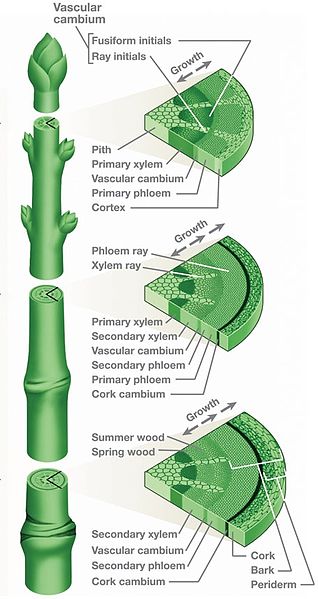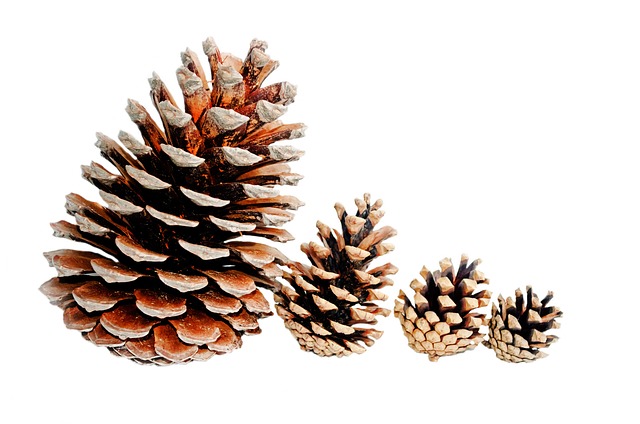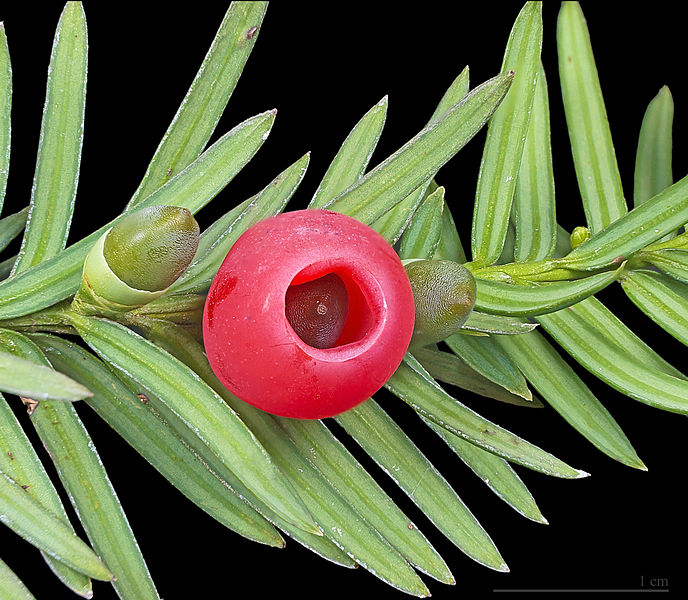Adaptation
There are several key adaptations of the English yew that are important to surviving in its environment. Some of these are common to many plants, while some are specific to yew trees alone. The presence of some key adaptations help us classify the English yew and other adaptations are helpful in areas such as reproduction.
Some Adaptations common to many plants:
Vascular tissue- One adaptation that is important to the success of large trees like the English yew, is the presence of vascular tissue. Vascular tissue helps the get water from the ground up to the leaves, and "food" from the leaves down to other parts of the plant. This tissue enables plants to grow very large because of the transport and support it provides. For more information on how this transport tissue works, see Nutrient Acquisition. The presence of vascular tissue provides a definite separation from those plants that do not have vascular tissue. An example of nonvascular plant would be the licorice fern and an example of a vascular plan would be the white willow. See classification for more information.
Naked seeds- The English yew is categorized as being a gymnosperm, meaning it is a seed plant with seeds contained in cones. This is a less primitive method of reproduction when compared to seedless plants which reproduce via spores. However, this is a more primitive adaptation than having seeds contained in fruits, which is seen in angiosperms (flowering plants). Another gymnosperm that uses cones for seed dispersal is the Eastern White Pine tree.
Some Adaptations specific to yew trees:
Really naked seeds- Like I stated above, the yew trees are gymnosperms, which means they have seeds contained in cones. Unlike other gymnosperms, yew trees have a highly adapted cone that turns bright red upon maturity. This structure is called an "aril." Click here for more information on how these specialized cones are important to reproduction. In the picture below you can see an immature cone and the bright red mature cones. Fun fact: the species name baccata means "carrying berries," but we know that these are not berries but highly adapted cones. The Aril is the only part of the English yew that is not toxic, and a food source for some birds (see interactions with other organisms.)
Slow growth- The English yew is a very slow growing tree. This adaptation would help the tree survive because the slow growth leads to tight grained wood. The tightly grained wood means that the tree can survive a long time, as it is stronger and has more structural support. Yew trees can live to be thousands of years old, hundreds of years after the center of the tree has rotten away. However, while the slow growth would help the tree survive in its natural habitat, it's strong wood made it ideal for a variety of uses. Overharvesting compounded with taking a long time to mature has lead to rapidly decreasing populations of English yew trees.

